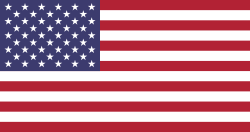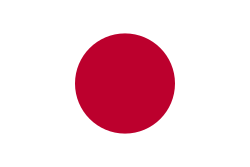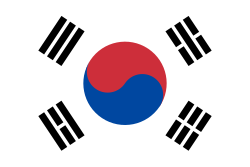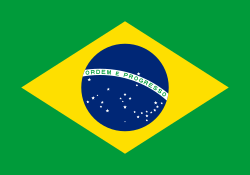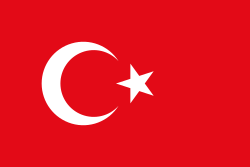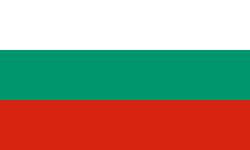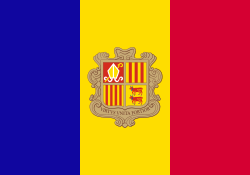WTA 125 2024
| WTA 125 2024 | |
|---|---|
 Alycia Parksová získala celkem čtyři tituly | |
| Základní informace | |
| Organizátor | Ženská tenisová asociace |
| Trvání | 1. ledna – 15. prosince 2024 |
| Ročník | 13. |
| Počet turnajů | 36 |
| Kategorie | WTA 125 |
| Singlové rekordy | |
| Nejvíce titulů | |
| Nejvíce finále | |
< 2023 2025 > | |
WTA 125 2024 byl třináctý ročník mezinárodních tenisových turnajů v rámci série WTA 125, střední úrovně ženského profesionálního tenisu organizované Ženskou tenisovou asociací. Startovní listina zahrnovala třicet šest turnajů na třech kontinentech. Dvacet dva z nich se hrálo v Evropě, šest v Severní Americe, pět v Jižní Americe, dva v Asii a jeden v Austrálii. Vůči sezóně 2023 počet událostí vzrostl o pět. Asijská část se do kalendáře vrátila poprvé od roku 2021. Sezónu zahájil canberrský turnaj, vůbec první událost série na australském kontinentu. Rozpočet turnajů činil 115 000 dolarů vyjma australského Canberra Tennis International a portugalského Oeiras Ladies Open, s navýšenou dotací 164 000 dolarů. Okruh probíhal mezi lednem a prosincem 2024.[1]
Nejvyšší počet tří singlových titulů vyhrála Američanka Alycia Parksová, která přidala i jednu deblovou trofej.[2] Závěrečnou akci sezóny, prosincový Open de Limoges, ovládla Švýcarka Viktorija Golubicová. Bodový zisk ji posunul zpět do první světové stovky.[3]
Kvůli pokračující invazi Ruska na Ukrajinu, zahájené v únoru 2022, zůstalo v platnosti rozhodnutí řídících organizací tenisu ATP, WTA a ITF s grandslamy o zrušení turnajů na území Ruska a vyloučení ruských a běloruských reprezentací ze soutěží včetně týmových turnajů. Ruští a běloruští tenisté mohli nadále na okruzích startovat, ale do odvolání nikoli pod vlajkami Ruska a Běloruska.[4]
Vyšší úrovní ženského profesionálního tenisu byl okruh WTA Tour 2024.
Chronologický přehled turnajů
Chronologický přehled uvádí turnajovou listinu okruhu WTA 125 2024 včetně dějiště, počtu hráček, povrchu a celkové dotace.
Tabulky měsíců uvádí vítězky a finalistky dvouhry i čtyřhry, dále pak semifinalistky a čtvrtfinalistky dvouhry. Zápis –D/–Q/–Č uvádí počet hráček dvouhry/hráček kvalifikace dvouhry/párů čtyřhry.
| Týden od | Turnaj | Vítězky | Finalistky | Semifinalistky | Čtvrtfinalistky |
|---|---|---|---|---|---|
| 1. ledna | Workday Canberra International Canberra, Austrálie tvrdý – 164 000 $ – 32D/32Q/16Č dvouhra • čtyřhra | 6–4, 6–3 | |||
6–2, 6–4 | |||||
| 5. února | L&T Mumbai Open Bombaj, Indie tvrdý – 115 000 $ – 32D/24Q/16Č dvouhra • čtyřhra | 5–7, 7–6(8–6), 6–2 | Polina Kuděrmetovová Alina Kornějevová | ||
6–4, 6–3 | |||||
| 19. února | Mexiko Series Puerto Vallarta 125 Puerto Vallarta, Mexiko tvrdý – 115 000 $ – 32D/16Q/8Č dvouhra • čtyřhra | 5–7, 6–3, 6–0 | |||
| Iryna Šymanovičová 6–2, 7–6(7–1) | |||||
| 11. března | Fifth Third Charleston 125 Charleston, Spojené státy tvrdý – 115 000 $ – 32D/16Q/16Č dvouhra • čtyřhra | 6–3, 6–2 | Diana Šnajderová | Erika Andrejevová | |
6–2, 6–1 | |||||
| 25. března | San Luis Open San Luis Potosí, Mexiko antuka – 115 000 $ – 32D/8Q/16Č dvouhra • čtyřhra | 6–1, 6–2 | |||
bez boje | |||||
| Megasaray Hotels Open Antalya, Turecko antuka – 115 000 $ – 32D/16Q/16Č dvouhra • čtyřhra | 6–2, 4–6, 6–2 | Polina Kuděrmetovová | |||
6–3, 3–6, [15–13] | Věra Zvonarevová | ||||
| 1. dubna | Open Internacional Femení Solgironès La Bisbal d'Empordà, Španělsko antuka – 115 000 $ – 32D/8Q/8Č dvouhra • čtyřhra | 3–6, 6–1, 6–2 | Oxana Selechmetěvová | ||
bez boje | |||||
| 15. dubna | Oeiras Ladies Open Oeiras, Portugalsko antuka – 164 000 $ – 32D/16Q/16Č dvouhra • čtyřhra | 6–4, 5–7, 6–4 | Aliona Faleiová | ||
6–0, 6–4 | |||||
| 29. dubna | L'Open 35 de Saint-Malo Saint-Malo, Francie antuka – 115 000 $ – 32D/14Q/16Č dvouhra • čtyřhra | 4–6, 7–6(7–3), 6–3 | |||
| Amina Anšbová 7–6(9–7), 2–6, [10–5] | |||||
| Catalonia Open WTA 125 Lleida, Španělsko antuka – 115 000 $ – 32D/16Q/16Č dvouhra • čtyřhra | 6–4, 4–6, 6–3 | ||||
7–5, 6–2 | |||||
| 13. května | Trophée Clarins Paříž, Francie antuka – 115 000 $ – 32D/8Q/8Č dvouhra • čtyřhra | Diana Šnajderová 6–2, 3–6, 6–4 | Erika Andrejevová | ||
7–6(7–3), 4–6, [11–9] | |||||
| Parma Ladies Open Parma, Itálie antuka – 115 000 $ – 32D/8Q/10Č dvouhra • čtyřhra | 7–5, 2–6, 6–4 | Kamilla Rachimovová | |||
Irina Chromačovová 6–1, 6–2 | |||||
| 3. června | Makarska Open Makarska, Chorvatsko antuka – 115 000 $ – 32D/8Q/8Č dvouhra • čtyřhra | 3–6, 6–2, 6–1 | |||
Iryna Šymanovičová 6–4, 3–6, [10–6] | |||||
| Open delle Puglie Bari, Itálie antuka – 115 000 $ – 32D/8Q/8Č dvouhra • čtyřhra | 6–4, 6–0 | ||||
Irina Chromačovová 6–1, 6–3 | |||||
| 10. června | BBVA Open Internacional de Valencia Valencie, Španělsko antuka – 115 000 $ – 32D/16Q/8Č dvouhra • čtyřhra | 6–3, 6–4 | Iryna Šymanovičová | ||
6–1, 4–6, [10–8] | |||||
| 17. června | Veneto Open Gaiba, Itálie tráva – 115 000 $ – 32D/8Q/8Č dvouhra • čtyřhra | 6–3, 6–1 | Kamilla Rachimovová | ||
7–6(7–4), 6–2 | |||||
| 8. července | Nordea Open Båstad, Švédsko antuka – 115 000 $ – 32D/16Č dvouhra • čtyřhra | 6–2, 6–2 | |||
7–5, 6–3 | |||||
| Grand Est Open 88 Contrexéville, Francie antuka – 115 000 $ – 32D/12Q/8Č dvouhra • čtyřhra | 6–4, 6–7(4–7), 7–5 | ||||
Iryna Šymanovičová 5–7, 6–3, [10–7] | |||||
| 22. července | Polish Open Varšava, Polsko tvrdý – 115 000 $ – 32D/8Q/8Č dvouhra • čtyřhra | 4–6, 6–3, 6–3 | |||
6–4, 7–6(7–5) | |||||
| 5. srpna | ECE Ladies Hamburg Open Hamburk, Německo antuka – 115 000 $ – 32D/8Q/8Č dvouhra • čtyřhra | 6–4, 6–2 | Polina Kuděrmetovová | ||
5–7, 6–3, [11–9] | |||||
| 12. srpna | Barranquilla Open Barranquilla, Kolumbie tvrdý – 115 000 $ – 32D/10Q/8Č dvouhra • čtyřhra | 6–2, 1–6, 6–3 | |||
4–6, 7–6(7–2), [10–7] | |||||
| 2. září | Guadalajara 125 Open Guadalajara, Mexiko tvrdý – 115 000 $ – 32D/8Q/8Č dvouhra • čtyřhra | Kamilla Rachimovová 6–3, 6–7(5–7), 6–3 | |||
6–4, 7–5 | |||||
| Montreux Nestlé Open Montreux, Švýcarsko antuka – 115 000 $ – 32D/16Q/8Č dvouhra • čtyřhra | 1–6, 6–3, 6–0 | Polina Kuděrmetovová | |||
6–3, 4–6, [10–7] | |||||
| 9. září | Țiriac Foundation Trophy Bukurešť, Rumunsko antuka – 115 000 $ – 32D/16Q/8Č dvouhra • čtyřhra | 6–3, 1–6, 6–4 | Alevtina Ibragimovová | ||
1–6, 6–2, [10–7] | |||||
| WTA Zavarovalnica Sava Ljubljana Lublaň, Slovinsko antuka – 115 000 $ – 32D/8Q/16Č dvouhra • čtyřhra | 7–6(10–8), 6–4 | Kristina Dmitruková | |||
5–7, 7–5, [10–7] | |||||
| 30. září | Hong Kong 125 Open Hongkong, Čína tvrdý – 115 000 $ – 32D/8Q/8Č dvouhra • čtyřhra | 4–6, 6–4, 6–4 | Anna Blinkovová | ||
6–3, 5–7, [10–5] | |||||
| 21. října | Abierto Tampico Tampico, Mexiko tvrdý – 115 000 $ – 32D/16Q/16Č dvouhra • čtyřhra | 6–4, 2–6, 6–4 | Anna Blinkovová | ||
6–3, 6–3 | Alina Kornějevová Polina Kuděrmetovová | ||||
| 28. října | Bolivia Open Santa Cruz, Bolívie antuka – 115 000 $ – 32D/8Q/8Č dvouhra • čtyřhra | 7–6(7–5), 6–0 | |||
6–4, 6–4 | |||||
| 4. listopadu | Dow Tennis Classic Midland, Spojené státy tvrdý (h) – 115 000 $ – 32D/16Q/15Č dvouhra • čtyřhra | 6–2, 6–1 | Alina Kornějevová | ||
6–2, 4–6, [10–5] | |||||
| Cali Open Cali, Kolumbie antuka – 115 000 $ – 32D/16Q/15Č dvouhra • čtyřhra | 6–3, 6–3 | ||||
6–2, 7–6(7–4) | |||||
| 18. listopadu | Fifth Third Charleston WTA 125 Charleston, Spojené státy antuka – 115 000 $ – 32D/8Q/15Č dvouhra • čtyřhra | 6–1, 7–6(7–4) | |||
7–6(8–6), 6–2 | |||||
| LP Open by Ind Colina, Chile antuka – 115 000 $ – 32D/8Q/14Č dvouhra • čtyřhra | 3–6, 6–4, 6–4 | ||||
bez boje | |||||
| 25. listopadu | IEB+ Argentina Open Buenos Aires, Argentina antuka – 115 000 $ – 32D/8Q/8Č dvouhra • čtyřhra | 6–3, 4–6, 6–4 | |||
6–4, 3–6, [10–7] | |||||
| 2. prosince | Open in Arte Angers Loire Angers, Francie tvrdý (h) – 115 000 $ – 32D/8Q/8Č dvouhra • čtyřhra | 7–6(7–4), 3–6, 6–0 | |||
6–3, 6–4 | |||||
| MundoTenis Open Florianópolis, Brazílie antuka – 115 000 $ – 32D/8Q/16Č dvouhra • čtyřhra | 6–1, 6–2 | ||||
7–6(7–3), 6–3 | |||||
| 9. prosince | Open BLS de Limoges Limoges, Francie tvrdý (h) – 115 000 $ – 32D/8Q/8Č dvouhra • čtyřhra | 7–5, 6–4 | Erika Andrejevová | ||
6–4, 6–3 | Erika Andrejevová |
Zrušené turnaje
| Týden od | Turnaj | důvod zrušení |
|---|---|---|
| 22. ledna | Tiny's Ice-Cream Open Danang, Vietnam tvrdý – 115 000 $ – 32D/8Q/16Č | nedostatečná podpora sponzorů[5] |
| 12. srpna | Golden Gate Open Stanford, Spojené státy tvrdý – 164 000 $ – 32D/16Q/16Č | plánovaná přestavba areálu[6] |
| 7. října | Chengdu Open WTA 125 Čcheng-tu, Čína tvrdý – 115 000 $ – 32D/16Q/16Č | |
| 14. října | Mazatlán Ladies Open Mazatlán, Mexiko tvrdý – 115 000 $ – 32D/8Q/8Č | |
| 21. října | Sao Paulo Open São Paulo, Brazílie antuka – 115 000 $ – 32D/16Q/16Č |
Rozpočet a body
Celková dotace každého turnaje činila 115 000 dolarů, vyjma dvou událostí s rozpočtem 164 000 dolarů. Ubytování a stravování – tzv. hospitality, zajišťovali organizátoři. Vítězky soutěží do žebříčku WTA získaly 125 bodů, finalistky pak 81 bodů. Jednalo se tak o snížené hodnocení vůči předchozí sezóně.
| WTA 125 2024[7] | ||||||||||
|---|---|---|---|---|---|---|---|---|---|---|
| ↓Soutěž / fáze→ | vítězky | finalistky | semifinalistky | čtvrtfinalistky | 16 v kole | 32 v kole | QV | Q2 | Q1 | |
| Dvouhra | 125 | 81 | 49 | 27 | 15 | 1 | 6 | 4 | 1 | |
| Čtyřhra (16Č) | 125 | 81 | 49 | 27 | 1 | — | — | — | — | |
| Čtyřhra (8Č) | 125 | 81 | 49 | 1 | — | — | — | — | — | |
| QV – vítězka kvalifikace, Q1/2 – 1. a 2. kolo kvalifikace, (xS/D/Q) – „x“ počet hráček v soutěži dvouhry/čtyřhry/kvalifikace dvouhry | ||||||||||
Přehled titulů
Tituly podle tenistek
Tituly podle státu
| Celkem | stát | dvouhra | čtyřhra |
|---|---|---|---|
| 14 | 6 | 8 | |
| 7 | 5 | 2 | |
| 7 | 3 | 4 | |
| 6 | 1 | 5 | |
| 5 | 2 | 3 | |
| 5 | 1 | 4 | |
| 4 | 1 | 3 | |
| 4 | 0 | 4 | |
| 3 | 3 | 0 | |
| 3 | 2 | 1 | |
| 3 | 1 | 2 | |
| 3 | 1 | 2 | |
| 3 | 1 | 2 | |
| 2 | 2 | 0 | |
| 2 | 1 | 1 | |
| 2 | 1 | 1 | |
| 2 | 1 | 1 | |
| 2 | 0 | 2 | |
| 2 | 0 | 2 | |
| 2 | 0 | 2 | |
| 1 | 1 | 0 | |
| 1 | 1 | 0 | |
| 1 | 0 | 1 | |
| 1 | 0 | 1 | |
| 1 | 0 | 1 | |
| 1 | 0 | 1 | |
| 1 | 0 | 1 | |
| 1 | 0 | 1 | |
| 1 | 0 | 1 |
Reference
V tomto článku byl použit překlad textu z článku 2024 WTA 125 tournaments na anglické Wikipedii.
- ↑ WTA 2024 Tournament Schedule with winners 2024. Tennis Pro Guru [online]. 2024-01-01 [cit. 2024-12-26]. Dostupné online. (anglicky)
- ↑ ZABLOUDIL, Luboš. Bencicová si třetí turnaj po porodu titulem neosladila, ve finále v Angers jí došly síly proti Parksové. TenisPortal.cz [online]. 2024-12-08 [cit. 2024-12-26]. Dostupné online.
- ↑ Rankings Watch: Surging Golubic wins WTA 125 Limoges, returns to Top 100. Women's Tennis Association [online]. 2024-12-15 [cit. 2024-12-26]. Dostupné v archivu pořízeném z originálu dne 2024-12-18. (anglicky)
- ↑ Joint Statement by the International Governing Bodies of Tennis. Women's Tennis Association [online]. 2022-03-01 [cit. 2023-12-29]. Dostupné v archivu pořízeném z originálu dne 2022-03-01. (anglicky)
- ↑ Tiny’s Tennis Open 2024 - Dates, Schedule & Prize Money. toomanyrackets.com [online]. Too Many Rackets, 2024-01-21 [cit. 2024-12-26]. Dostupné v archivu pořízeném z originálu dne 2024-05-20.
- ↑ The 2024 Golden Gate Open has been canceled. [online]. Golden Gate Open [cit. 2024-12-26]. Dostupné v archivu pořízeném z originálu dne 2024-12-10. (anglicky)
- ↑ 2024 WTA Official Rulebook [PDF]. Women's Tennis Association, 2024 [cit. 2024-12-26]. S. 143. Dostupné v archivu pořízeném z originálu dne 2024-12-09. (anglicky)
Média použitá na této stránce
Flag of Australia, when congruence with this colour chart is required (i.e. when a "less bright" version is needed).
See Flag of Australia.svg for main file information.This is the national flag of Belgium, according to the Official Guide to Belgian Protocol. It has a 13:15 aspect ratio, though it is rarely seen in this ratio.
Its colours are defined as Pantone black, Pantone yellow 115, and Pantone red 032; also given as CMYK 0,0,0,100; 0,8.5,79,0; and 0,94,87,0.Vlajka České republiky. Podoba státní vlajky České republiky je definována zákonem České národní rady č. 3/1993 Sb., o státních symbolech České republiky, přijatým 17. prosince 1992 a který nabyl účinnosti 1. ledna 1993, kdy rozdělením České a Slovenské Federativní republiky vznikla samostatná Česká republika. Vlajka je popsána v § 4 takto: „Státní vlajka České republiky se skládá z horního pruhu bílého a dolního pruhu červeného, mezi něž je vsunut žerďový modrý klín do poloviny délky vlajky. Poměr šířky k její délce je 2 : 3.“
Flag of Portugal, created by Columbano Bordalo Pinheiro (1857-1929), officially adopted by Portuguese government in June 30th 1911 (in use since about November 1910).
bendera Indonesia
Při zobrazení tohoto souboru lze snadno přidat orámování
Georgian flag in Pantone MS.
The national flag of Kingdom of Thailand; there are total of 3 colours:
- Red represents the blood spilt to protect Thailand’s independence and often more simply described as representing the nation.
- White represents the religion of Buddhism, the predominant religion of the nation
- Blue represents the monarchy of the nation, which is recognised as the centre of Thai hearts.
Chinese Taipei Olympic Flag. According to the official website of Chinese Taipei Olympic Committee, Blue Sky(circle) & White Sun(triangles) above the Olympic rings is neither the National Emblem of the Republic of China, nor the Party Emblem of Kuomintang (KMT), but a design in between, where the triangles do not extend to the edge of the blue circle, as registered at International Olympic Committee in 1981 and digitally rendered in 2013. Besides, the blue outline of the five-petaled plum blossom is broader than the red one. Moreover, the CMYK code of the blue one and the Blue Sky & White Sun is "C100-M100-Y0-K0", and different from the Olympic rings (C100-M25-Y0-K0). Note that it's the only version recognized by IOC.
Chinese Taipei Olympic Flag. According to the official website of Chinese Taipei Olympic Committee, Blue Sky(circle) & White Sun(triangles) above the Olympic rings is neither the National Emblem of the Republic of China, nor the Party Emblem of Kuomintang (KMT), but a design in between, where the triangles do not extend to the edge of the blue circle, as registered at International Olympic Committee in 1981 and digitally rendered in 2013. Besides, the blue outline of the five-petaled plum blossom is broader than the red one. Moreover, the CMYK code of the blue one and the Blue Sky & White Sun is "C100-M100-Y0-K0", and different from the Olympic rings (C100-M25-Y0-K0). Note that it's the only version recognized by IOC.
Flag of Canada introduced in 1965, using Pantone colors. This design replaced the Canadian Red Ensign design.
Flag of Liechtenstein
Autor: Nuță Lucian from Cluj-Napoca, Romania, Licence: CC BY-SA 2.0
(c) Nuta Lucian
